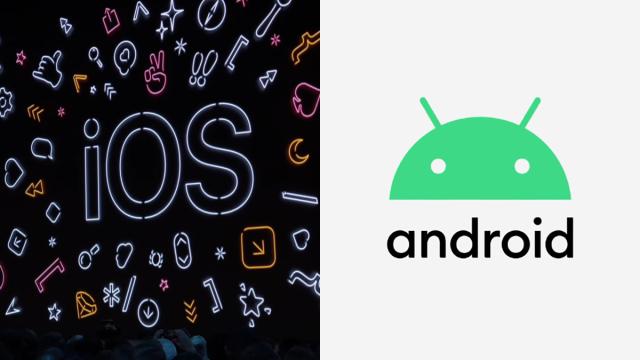In 2019, Apple pushed out iOS 13 and Google launched Android 10—both polished, mature mobile operating systems that offer just about every feature you could want… or do they? We’ve got some ideas about how Apple and Google might go further with these OSes in 2020.
[referenced url=”https://gizmodo.com.au/2019/12/all-the-major-updates-in-apple-ios-13-3/” thumb=”https://gizmodo.com.au/wp-content/uploads/2019/10/iStock-1059636822-1-410×231.jpg” title=”All The Major Updates In Apple iOS 13.3″ excerpt=”Apple’s iOS 13.3 is now live and with it comes a few new features as well as bunch of much-needed bug fixes.”]
As always we’re keen to hear your thoughts as well: You probably live a lot of your life inside either Android or iOS, so what improvements would you like to see added? Where are the glaring holes in terms of features and functionality? Weigh in in the comments.
1) Change the defaults (iOS)
iOS has always pushed you into using your phone the way Apple wants you to, and for a lot of people that’s fine. One change we’d love to see here though is being able to set different default apps for emails, photos, web links, and so on—it makes no sense that you still have to use Apple’s native apps for your default choices when there are so many alternatives around. Some workarounds are available, but it’s still one of the frustrations of iOS.
2) Better widgets (Android and iOS)
Apple has tentatively embraced widgets in the Notification Centre and on the iPad home screen just as Google seems to have largely given up on them—but both Android and iOS could do better with widgets. More information at a glance, more intuitive shortcuts to specific, commonly used tasks inside apps (like taking photos or checking in), better designs… the Pixel’s default home screen weather and agenda widget is a good start.
3) Smarter notifications (Android and iOS)
Notifications have come a long way on Android and iOS, and a lot of the old annoyances have been dealt with. That said, there’s still room for improvement: We still don’t get enough control over what makes our phones buzz or ring and what doesn’t, especially inside apps and in Do Not Disturb mode. With AI onboard handsets now, phones should be able to quickly learn the apps, the people and the alerts that we actually care about.
4) More customisation options (Android and iOS)
Android has always been way ahead here, with all sorts of launcher apps available to tweak your phone’s appearance pixel by pixel—but we’d like to see the theming options teased in Android 10 actually turn into a fully-fledged feature. As for iOS, just being able to break away from the standard rows and columns of app icons would be a good start; once Apple has figured out how to do that, it can start catching up to Android.
5) Built-in screen recording (Android)
One of the features that appeared briefly in the early beta versions of Android 10 was a built-in screen recorder, something that iOS already has. It got pulled before the final release though, so we’re hoping that it makes a return in Android 11, or perhaps even sooner—there are plenty of third-party app options for recording screen activity on Android, but having an integrated option would make a lot of tasks easier.
6) Better integration with other devices (Android and iOS)
Our phones should be working better with other devices at this stage, whether it’s wireless syncing between laptop and mobile, getting notifications across multiple devices, or controlling media playback on any device from a phone. There are already various third-party solutions for all of this, but everything’s a bit piecemeal and dependent on what other devices you’re using—making the setup more complicated for end-users.
7) Always-on display (iOS)
Apple may well think battery life is more important than an always-on display, but it’s proved its usefulness on Android: Once you’ve gotten used to checking the time and looking for notifications with a glance, having to actually pick up your phone to see what’s on the lock screen feels antiquated by comparison. Let’s hope that some of the tech used in the always-on display on the Apple Watch Series 5 finds its way to the next iPhone.
8) Smarter home screens (Android and iOS)
Both Android and iOS now try and suggest apps that you might want to launch based on your usage history and the time of day, but in our experience at least, these innovations don’t work too well—after a week, a modern-day phone should realise if you turn off your smart lights and put on a podcast every night before bed, and give you these options front and centre at the right time. At least Apple and Google have made a start in this area.
9) iMessage for Android (Android)
iMessage remains one of the main reasons that iPhone owners stick to the iPhone, but Google has consistently failed to develop a competitor. The latest Google push seems to be to use the SMS upgrade RCS instead of launching another messaging app, but that has its own set of problems, not least a lack of end-to-end encryption in its current form. Apple supporting RCS seems about as likely as Apple launching iMessage for Android right now.
